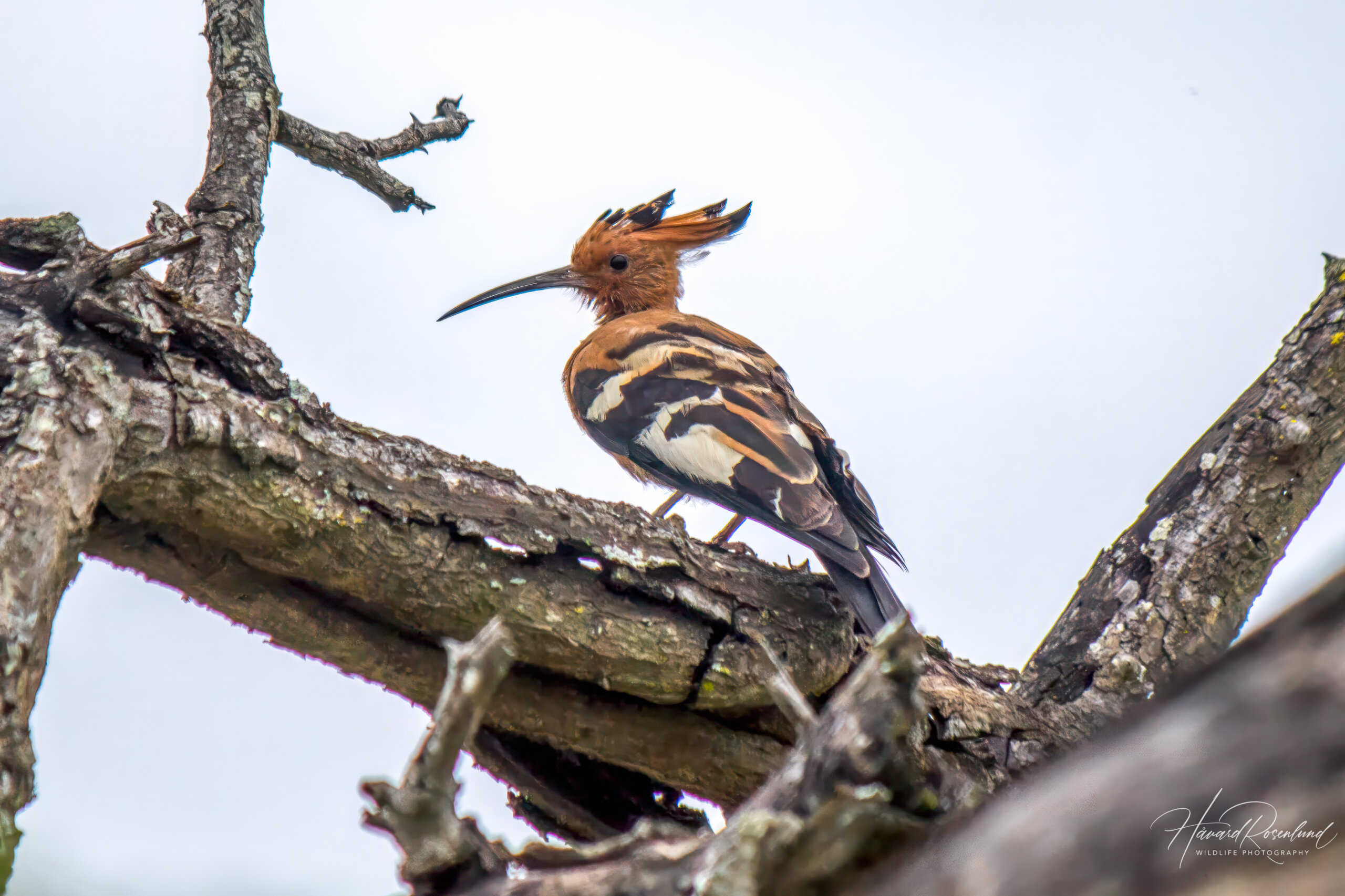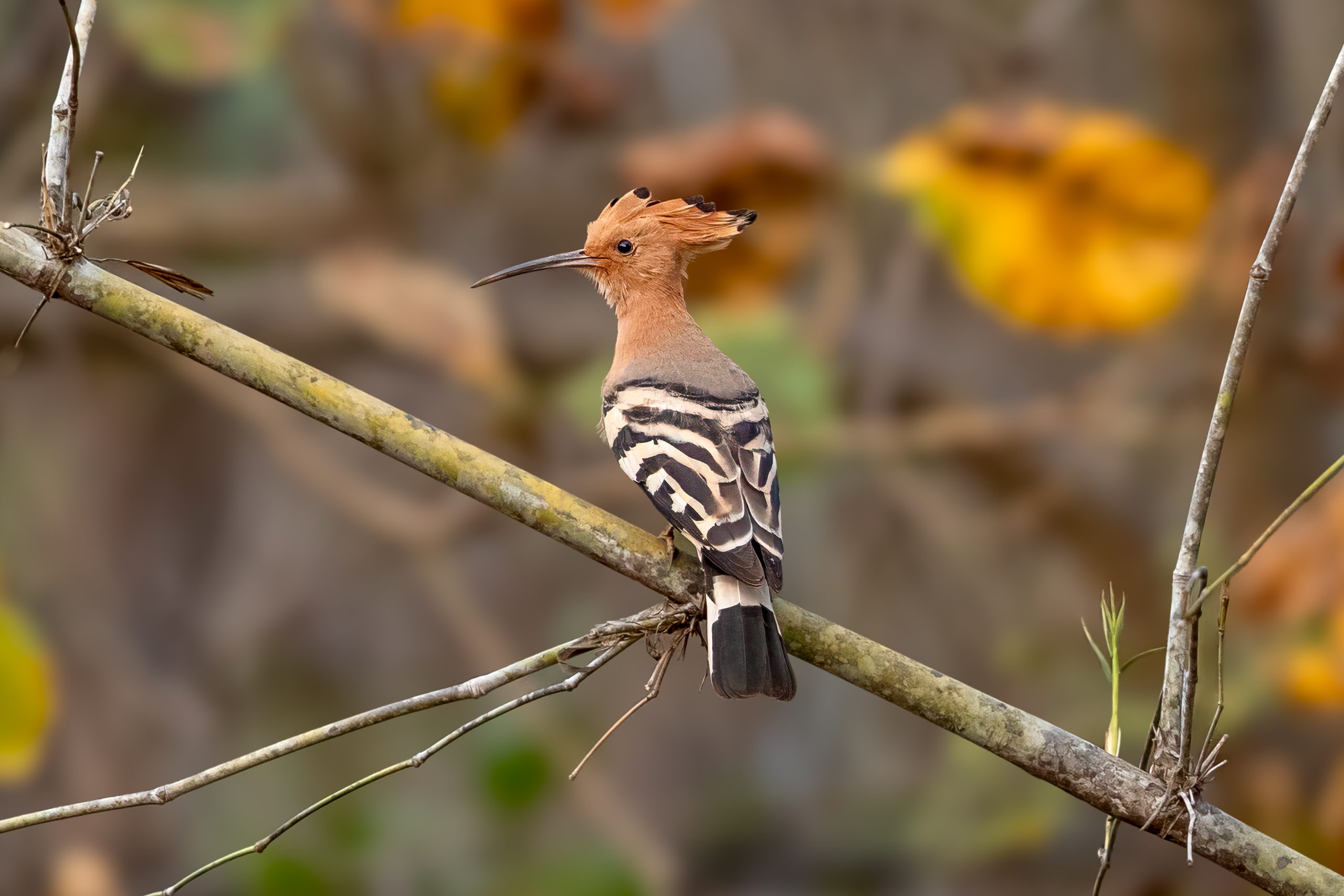Description
The African hoopoe (Upupa africana) is an unmistakable bird commonly found throughout sub-equatorial Africa. It is often put as a subspecies of the widespread Eurasian hoopoe (Upupa epops) but is by many considered a separate species. There are slight differences between the two species, as the African is markedly darker chestnut in color and lacks the white towards the end of the crest feathers. The two species do not overlap much in range, although the Eurasian species is both resident and wintering in certain parts of Africa. The thin, long, and slightly curved beak, prominent crest, chestnut plumage, and black and white striped wings and tail makes it an easy bird to identify in the field. It reaches lengths of around 25–32 cm (9.8–12.6 in).
Diet & habitat
The African hoopoe can live in a wide variety of habitats if it has flat open grounds on which to forage and cavities on vertical surfaces such as trees, cliffs, and abandoned burrows for nesting purposes. Manmade objects, such as walls, nest boxes and haystacks can also be used for nesting, making the African hoopoe able to survive in urban and suburban habitats. It will feed mainly on insects on the ground, but will also eat frogs, small reptiles, as well as seeds and fruit. It is common to see the African hoopoe probe the ground with its bill as its search for underground insects. It can, and will, sometimes chase and catch prey in the air.
Nesting
The African hoopoe is seasonably monogamous and territorial. Individuals of the same sex, often males, can fight viciously over territories. By using their long sharp beaks as weapons, individuals are sometimes blinded in fights. Territories are often determined by nesting cavities chosen by a male. Such cavities are most common in trees, but various other objects and substrates can be used as explained earlier.
Breeding season generally starts in August and ends in February with September-November as peak months. The female will lay four to seven eggs in successive days. When the last egg is laid, the female will start incubating. Incubation lasts for about 15-16 days. The male will feed the chicks for the first week after hatching before the female also joins in. After 26-32 days the chicks leave the nest, and after another month they are fully independent.
Status
The African hoopoe is widespread in sub-equatorial Africa, and unlike the Eurasian hoopoe, it is resident all year round. Because of the few requirements needed for the African hoopoe it is quite the successful bird species and numerous. Although the African hoopoe is not listed as a separate species on the IUCN Red List, there are no reasons to believe that it would be listed as anything else but least concern.






